
How esports helped a snooker player go pro
Ishpreet Singh Chadha was a top shooter competitor, but his real dream was a career on the green baize.
2023-08-23 09:17

Justin Trudeau slams Facebook for blocking news stories about wildfires
Canadian Prime Minister Justin Trudeau hit out at Facebook as detrimental to democracy after the news service began blocking access to news stories on its platforms in Canada in the midst of a wildfire crisis. “It is so inconceivable that a company like Facebook is choosing to put corporate profits ahead of ensuring that local news organizations can get up-to-date information to Canadians and reach them,” Mr Trudeau said prior to a cabinet meeting on Prince Edward Island on Monday in comments reported by the New York Post. Mr Trudeau’s anger at Facebook comes as the company has started enforcing a new policy blocking Canada-based users from accessing news stories in response to a recent Canadian law that requires the company to pay publishers for content shared on the platform. Facebook, in response, has sharply reduced its role as a news service in the country — an issue in an emergency like the one Canada is facing now as its summer wildfires have forced the evacuation of some 35,000 families in the western province of British Columbia. “Democracy depends on people being able to trust high-quality journalism and of all sorts of different perspectives and points of view,” Mr Trudeau said on Monday. “But right now, in an emergency situation, up-to-date local information is more important than ever.” The prime minister’s contention is that Facebook’s policy is threatening people’s safety — a charge that a Facebook spokesperson denied in a statement provided to the Associated Press in which they said that Canadian Facebook users can still use the platform “to connect with their communities and access reputable information, including content from officials.” The dispute between Canadian lawmakers and companies like Facebook and Google set to be affected by the payment law has been brewing for months. In comments made last year, Mark Zuckerberg, the CEO of Facebook’s parent company, Meta, said the Canadian law “is based on the incorrect premise that Meta benefits unfairly from news content shared on our platforms, when the reverse is true.” In fact, experts say, the popularity of Facebook as a news-sharing platform has helped to drive a number of news agencies out of business while reportedly profiting in some cases from the dispersal of misinformation. Meanwhile, Canadian wildfires continue to burn and push families out of their homes. Per the Post, there have been more than 5,700 fires in Canada this summer that have burned more than 50,000 square miles — with the resulting smoke felt at various points in states across the US. Read More Canadian officials ease wildfire evacuation orders in scenic British Columbia region
2023-08-23 05:16
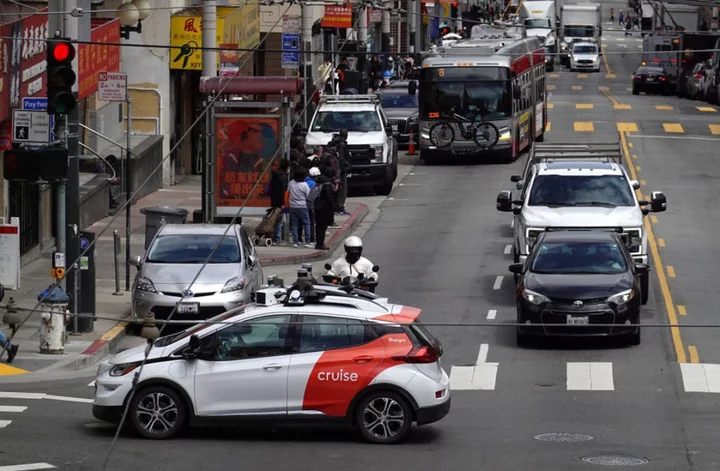
Traffic, wet concrete, and a collision with a fire truck: Robotaxis cause chaos in San Francisco after expansion
On 10 August, California regulators voted to expand the footprint of paid taxi services by autonomous, driverless cars from Cruise and Waymo in San Francisco. Since then, it’s been utter chaos, with the AVs involved in traffic jams, slapstick malfunctions, and a car accident with a fire truck. A day after the vote, video went viral on social media showing about 10 frozen Cruise taxis snarling traffic in the North Beach neighbourhood, which company officials later said was caused by a connectivity issue due to a spike in cell traffic because of a nearby music festival. The following Tuesday, a Cruise taxi was stuck in wet concrete at a construction site. “I can see five different scenarios where bad things happen and this is one of them,” resident Paul Harvey told SFGATE. “It thinks it’s a road and it ain’t because it ain’t got a brain and it can’t tell that it’s freshly poured concrete.” Two days after that, a Cruise taxi had what might be its most serious accident yet, colliding with a fire truck in the Tenderloin neighbourhood, giving the taxi’s passengers non-severe injuries. A firefighter in the truck said the AV “lurched” as it passed through an intersection ABC 7 reports, while Cruise said its vehicle detected the emergency sirens but was unable to get out of the way in time from the truck, which drove into the oncoming traffic lane. “The AV’s ability to successfully chart the emergency vehicle’s path was complicated by the fact that the emergency vehicle was in the oncoming lane of traffic, which it had moved into to bypass the red light,” the company wrote in a statement. “Cruise AVs have the ability to detect emergency sirens, which increase their ability to operate safely around emergency vehicles and accompanying scenes. In this instance, the AV identified the siren as soon as it was distinguishable from the background noise. “The Cruise AV did identify the risk of a collision and initiated a braking maneuver, reducing its speed, but was ultimately unable to avoid the collision,” the company added. Following the repeated mishaps, the California Department of Motor Vehicles asked Cruise to cut its 400-strong deployment of AVs in San Francisco in half, with the agency saying it was “investigating recent concerning incidents.” As The Independent reported, critics of AVs warned ahead of their expansion in San Francisco that the driverless cars weren’t ready for primetime, particularly when it comes to interfacing with emergency vehicles. According to data Cruise shared with the state earlier this month, between January and mid-July of 2023, Cruise AVs temporarily malfunctioned or shut down 177 times and required recovery, 26 of which such incidents occurred with a passenger inside, while Waymo recorded 58 such events in a similar time frame. Meanwhile, according to the San Francisco Municipal Transit Agency (SFMTA), between April 2022 and April 2023, Cruise and Waymo vehicles have been involved in over 300 incidents of irregular driving including unexpected stops and collisions, while the San Francisco Fire Department says AVs have interfered 55 times in their work in 2023. Last year, Cruise lost contact with its entire fleet for 20 minutes according to internal documentation viewed by WIRED, and an anonymous employee warned California regulators that year the company loses touch with its vehicles “with regularity.” Since being rolled out in San Francisco, robotaxis have killed a dog, caused a mile-long traffic jam during rush hour, blocked a traffic lane as officials responded to a shooting, and driven over fire hoses. Jeffrey Tumlin, San Francisco’s director of transportation, has called the rollout of robotaxis a “race to the bottom,” arguing Cruise and Waymo weren’t yet definitive transit solutions, and instead had only “met the requirements for a learner’s permit.” Read More How a vote to empower autonomous ‘robotaxis’ from Cruise and Waymo has divided San Francisco GM's Cruise autonomous vehicle unit agrees to cut fleet in half after 2 crashes in San Francisco San Francisco launches driverless bus service following robotaxi expansion GM's Cruise autonomous vehicle unit agrees to cut fleet in half after 2 crashes in San Francisco Chinese military launches drills around Taiwan as 'warning' after top island official stopped in US San Francisco launches driverless bus service following robotaxi expansion
2023-08-20 03:57
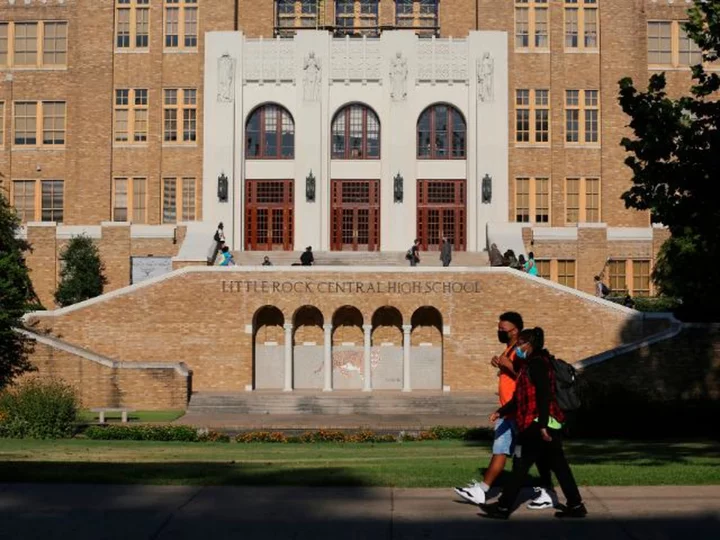
Little Rock schools will allow African American class to count for graduation, in break from Arkansas state officials
In a sharp break from Arkansas education officials, the Little Rock School District said in a news release it will offer AP African American Studies for credit.
2023-08-18 20:24
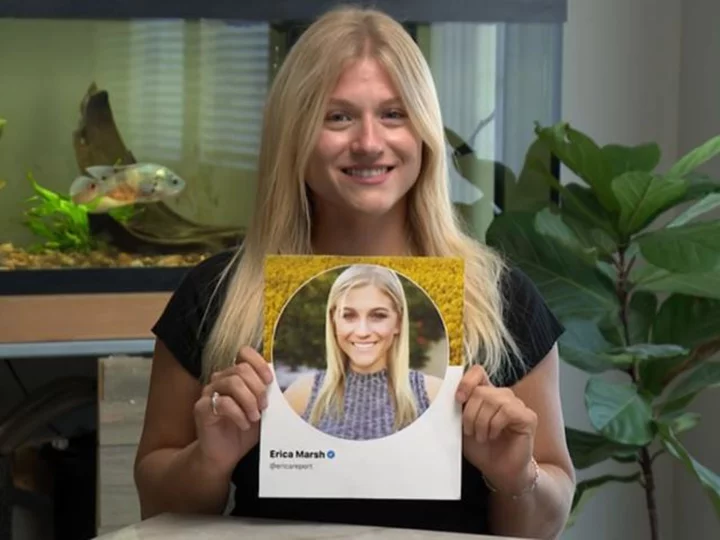
How a real Trump supporter unknowingly became the face of a fake liberal Twitter account
Erica Marsh quickly rose to fame earlier this year as a viral left-wing voice on social media. Her incendiary tweets, often ultra-liberal and hyper-political, drew millions of views and the ire of conservatives, who pointed to her outlandish comments comparing Republicans to pedophiles and conservative Supreme Court justices to Nazis as examples of extreme liberalism run amok.
2023-08-18 08:27
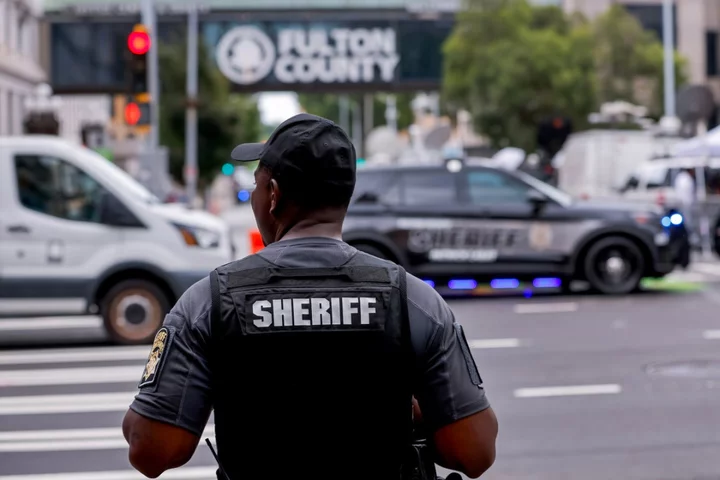
Georgia police investigating online threats to jurors after pro-Trump doxxing campaign
Police in Georgia are investigating online threats to members of a grand jury that voted to indict Donald Trump and 18 of the former president’s allies accused of conspiring to overturn the results of the 2020 presidential election in a sprawling criminal case. The Fulton County Sheriff’s Office is “aware that personal information from members of the jury” has been shared across social media platforms, the agency announced on 17 August, less than three days after a sweeping charging document was unsealed. As required under state law, the names of the jurors are listed in the 98-page indictment. The sheriff’s office is working with local, state and federal law enforcement agencies to “track down” the origins of the threats in the county and in other jurisdictions, according to the statement. The former president’s supporters have published the jurors’ names, social media profiles, addresses and phone numbers as part of an apparent harassment campaign following right-wing outrage over a sweeping criminal indictment, the fullest accounting yet of an alleged effort among Mr Trump and his allies to coerce officials into a fraudulent scheme to subvert the votes of millions of Americans. Far-right message boards and platforms dominated by pro-Trump users such as Gab and Truth Social have been flooded with comments and posts surrounding the case and the jurors, with pledges to “doxx” or publish a person’s personal information online with the intent to harass them. Accounts on fringe far-right message boards such as 4chan and The Donald have threatened to follow jurors home and “photograph their faces,” labelled their names a “hit list,” posted images of jurors’ alleged profiles on Facebook and LinkedIn, tried to determine their political affiliations and religious and ethnic backgrounds, and promoted violence against them. The Independent’s review of posts across Truth Social, where users vie for the audience of the former president himself, shows users rushing to Mr Trump’s defence while trying to identify and smear members of the jury who indicted him. Users on the far-right, pro-Trump message board The Donald, frequently a hotbed for violent rhetoric targeting political opponents, have promoted the killing of jurors and suggested igniting civil war. This is a developing story Read More Trump insists Democrats are angry at his indictment too as Georgia jail booking nears – live updates Will the Georgia gang of 18 turn on Trump? Trumpworld hanging by a thread as co-accused pressured to flip on ex-president Who is Fani Willis, the Georgia prosecutor who could take down Trump
2023-08-18 06:22

Kentucky gubernatorial rivals Andy Beshear and Daniel Cameron offer competing education plans
Democratic Gov. Andy Beshear proposed awarding the largest pay raise in decades to Kentucky's public school personnel, upping the ante Wednesday in his competition with Republican challenger Daniel Cameron, who offered his own plan to boost salaries and overcome pandemic learning setbacks. The rivals in the November election outlined ideas for boosting K-12 education on back-to-back days, staking out positions on an overarching issue. Their gubernatorial showdown is one of the nation's most closely watched this year as the Democratic incumbent tries to win reelection in the red state. Beshear garnered strong support from teachers in winning the governorship in 2019, naming an educator as his running mate and vowing to make education his top priority. Cameron is trying to make inroads, having apologized for an ex-GOP governor's feud with educators and unveiling a plan to boost starting teacher pay and develop tutoring programs for students who fell behind during the pandemic. Beshear countered Wednesday with his own plan highlighted by an 11% pay raise for teachers and all school personnel, including bus drivers, janitors and cafeteria staff. It would amount to the single largest raise for Kentucky public school educators in at least 40 years, the governor said. “You can’t catch a kid up on math without a math teacher, and we cannot remain competitive with other states if we don’t pay teachers closer to what they’re worth,” the governor said at a news conference. The governor said his plan would fully fund student transportation. He said that funding, along with the pay raise, would help avoid problems like what occurred in Louisville's district, where schools closed for more than a week after a redesign of bus routes resulted in long delays on the first day of classes. Beshear's plan was in the works long before Cameron unveiled his proposals Tuesday, the governor's office said. Kentucky ranks 44th nationally in average teacher starting pay and 40th in average teacher pay, Beshear said, citing statistics from the National Education Association. An 11% raise — a $1.1 billion expense over two years — would vault Kentucky to the middle of the pack. With a record budget surplus and strong economy, the governor's proposals are affordable with “plenty of space” to meet other demands, State Budget Director John Hicks said. On Tuesday, Cameron proposed setting the statewide base starting pay for new teachers at $41,500. That would have a ripple effect by lifting pay for other teachers, he said. “What our plan entails is making sure that we get every county in our commonwealth up to that number, so we can ensure that our teachers are in a position to take care of themselves and be confident in the classroom as they work with our students,” Cameron said. Beshear said the average teacher starting salary in Kentucky is $38,010, based on NEA statistics. He said his proposal would raise that to $42,191. The governor pledged to continue pushing for state-funded pre-K for all 4-year-olds if he wins a second term. The proposal made no headway previously in the Republican-dominated legislature. Beshear said his plan includes fully funding teachers’ pensions and medical benefits to ensure there's no increase in health insurance premiums for school employees. A key part of Cameron's plan would develop an optional, 16-week tutoring program for math and reading instruction. Students falling behind grade level would get first priority, he said. The proposal mirrors initiatives already started by some school districts. It's a response to statewide test scores last fall that showed fewer than half of students were reading at grade level. Lower across-the-board scores were posted in math, science and social studies. National test scores showed it’s a problem across the U.S. as schools try to recover from the pandemic. Cameron blames Beshear for learning setbacks during the pandemic, when schools shifted to virtual learning, saying it put many students at risk of losing “their God-given potential.” The governor supported school closures during the height of the pandemic to protect people from the virus. He prioritized vaccinating teachers to get schools reopened and says his policies reflected recommendations from then-President Donald Trump's coronavirus task force. Kentucky lawmakers have generally followed their own course in setting education policies. The two-year budget passed last year funded full-day kindergarten and poured money into teacher pensions and infrastructure. They increased the state’s main funding formula for K-12 schools, but the amount was considerably less than what Beshear proposed. The governor chided lawmakers Wednesday for “shorting” districts in allocations for school transportation. “If you want to solve transportation issues, then we need to pay bus drivers enough,” Beshear said. Read More Ukraine war’s heaviest fight rages in east - follow live Charity boss speaks out over ‘traumatic’ encounter with royal aide Kentucky governor's efforts to help storm-ravaged towns may dilute GOP advantage in rural areas Kentucky candidates trade barbs at Fancy Farm picnic, the state's premier political event McConnell is warmly embraced by Kentucky Republicans amid questions about his health
2023-08-17 04:57

Texas woman awarded $1.2bn after ex-boyfriend posted revenge porn online
A Texas woman has been awarded more than one billion dollars after explicit images of her body were shared on porn websites by her former partner. Attorneys for the woman, who is only identified in court documents as Jane Doe, told ABC News that the $1.2bn award was more than what they were expecting. The woman filed her civil lawsuit in Harris County Civil Court in April 2022, alleging that her ex-boyfriend Marques Jamal Jackson had shared her nudes on fake Twitter, Facebook and YouTube profiles. The defence also alleged that Mr Jackson, who did not attend the one-day-long civil trial, then forwarded the profiles to the woman’s friends, family, and colleagues. Deliberations before the jury reached an agreement regarding the award sum — the largest civil verdict in the Lone Star State so far this year — only took 30 minutes. Speaking out following the trial, the woman said having pictures of her naked body shared without her permission had left her traumatised. “This type of experience is devastating,” the woman told ABC. “It’s extremely painful. It’s hurtful. It’s embarrassing and you fear that either something will trigger and it will start again or that the previous effort inspired someone new and then they might start.” According to court documents obtained by KHOU 11, the woman and Mr Jackson met in 2016 and went on to have a four-year relationship. When they broke up in 2021, Mr Jackson allegedly shared her nudes on Facebook, Twitter, Dropbox, and Pornhub. The woman’s attorney Jacob Schiffer said that Mr Jackson had access to a camera system installed on her mother’s property as well as her login information for several social media and email accounts. Mr Schiffer said Mr Jackson would even hack into the woman’s Zoom meetings to show her nudes. “Every day was me, wake up, I’m checking, I’m trying to prevent it, I’m trying to constrain it,” the woman recounted to ABC. At one point, her attorney told ABC, Mr Jackson reportedly emailed her: “...won’t change the fact that you will spend the rest of your life trying and failing to wipe yourself off the internet. Everyone you ever meet will hear the story and go looking.” The Independent could not find legal representation listed for Mr Jackson. The victim said that she unsuccessfully asked police for help and after a year of living in fear that more of her pictures would be shared online, she hired legal counsel. Mr Schiffer said that while he doesn’t expect Mr Jackson to pay the money, he hopes the hefty sum sends a message. “For the future, anyone thinking of wanting to do this to somebody else that is going to weigh on them like a ball and chain until the date that they’re buried,” Mr Shiffer said. Sharing intimate material without a person’s consent is considered a felony. It is unclear whether the victim plans to file criminal charges. The Independent has reached out to the woman’s attorneys. Read More Four in 10 women have experienced or witnessed sexual harassment on social media, research has found Thirteen-year-old girl is forced to give birth under Mississippi abortion ban How a law associated with mobsters could be central in possible charges against Trump
2023-08-15 07:16
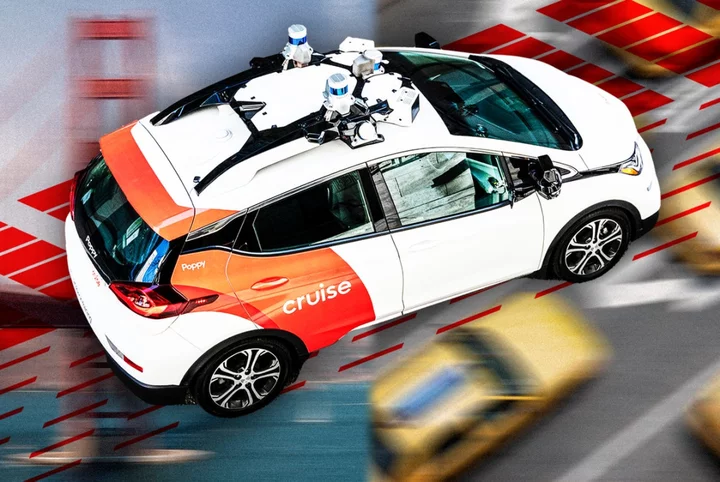
How a vote to empower autonomous ‘robotaxis’ from Cruise and Waymo has divided San Francisco
The future was waiting outside my door, and it was an electric taxi named Saxophone. On Wednesday, 9 August, on the eve of a much-watched vote to expand the footprint of autonomous vehicles (AV) in San Francisco, I summoned a driverless taxi from the company Cruise for a test drive. The Cruise AVs, which began operating paid, Uber-like on-demand rides in June of 2022, are a frequent sight in my San Francisco neighbourhood, The Richmond. And they’re about to get even more ubiquitous: on Thursday evening, following a marathon seven-hour public comment session, the California Public Utilities Commission (CPUC) voted 3-1 to allow Cruise and Google parent company Alphabet’s Waymo venture to run paid rides, without a safety driver in the cabin, 24/7 on San Francisco streets. Much like the members of the public who turned out in droves to comment on the vote, I have mixed feelings about autonomous vehicles. I’ve been trailed, somewhat ominously, on backstreets by a Cruise AV as I rode my bike, with the robo-driver declining to pass me like most human pilots would. I’ve seen a homeless man approach the window of a robotaxi to ask for change, only to find no one inside, a metaphor of San Francisco inequality a bit too on the nose even for a writer like me. I decided, for the time being, to leave the public debating to the local officials and longtime San Francisco residents and start with the basics: what was it like to ride in one of these things? For a 0.8 mile, one-way ride to the local grocery store, I was charged $8.26, about a dollar per minute of driving time. The ride was smooth, though the Cruise AV would occasionally move in a way that was, while perfectly safe, not quite human, gliding without hesitation within inches of a parked SUV’s bike rack, hesitating ever-so-slightly within the normally smooth arc of a turn, accelerating with an almost imperceptible stutter after it dropped me off. Still, I was lucky. Earlier this month, an NBC reporter taking a test drive was stuck inside a Cruise that mysteriously stalled, then blocked two lanes of traffic as it idled at a 45 degree angle against the median. After I got home, driven by “Flora,” I looked it up and the price of my roundtrip was virtually identical to that of an Uber. I sat there thinking about the strange economics of 2023 San Francisco, where the product of billions of dollars of investment had delivered a service that was both an incredible technical leap, the stuff of the Jetsons, that also offered me no financial advantage, snatched a job from a rideshare driver, and took me on a round trip that would’ve been 15 minutes faster – and free – on a rusty old bike. The future had arrived, but was it one that I, or San Francisco, really wanted, let alone needed? Wednesday’s vote exposed how deeply divisive such technologies are in San Francisco, and the thorny considerations inherent in any attempt to carry out large-scale changes to the transit system. Human drivers are unsafe death machines themselves, killing thousands of people each year. And the need for green mass transit has never been higher. But are autonomous vehicles the best solution? The companies, at least, celebrated the decision as heralding a moment of great progress. “Offering a commercial, 24/7 driverless ridehail service across San Francisco is a historic industry milestone – putting Cruise in a position to compete with traditional ridehail, and challenge an unsafe, inaccessible transportation status quo,” Prashanthi Raman of Cruise said in a statement to The Independent. It was indeed major victory for the industry, though regulators warn there’s still much work to be done before autonomous vehicles flood the roads. “The conversation on how best to integrate AVs into our community is far from over,” said CPUC president Alice Busching Reynolds, who voted for the expansion. One commissioner, Genevieve Shiroma, wasn’t yet convinced, and argued the industry hasn’t given good enough data and has been too quick to brush off reports of driverless vehicles behaving strangely around first responders. “Imagine if one of those so-called anecdotes involved a member of your family in need of urgent medical attention, or was trapped in a burning building,” she said, adding, “All it takes is one real-life example.” Outside of the Public Utilities Commission building, protesters rallied and drew messages like ‘people not profits’ in chalk on the sidewalk, as AV company employees showed out in matching t-shirts. Inside, commissioners heard a mosaic of different opinions. “We are in desperate need of people coming to San Francisco,” Matthew Sutter, who has been driving a taxi cab for 31 years, told the commission. “You’re going to take away jobs with this thing.” Meanwhile, a man named Michael Martinez said expanding Cruise and Waymo’s footprint in San Francisco would mean the city, already one of the most expensive and unequal places to live in America, was “pimped out by yet another couple of large tech companies so that all their employees here wearing yellow shirts might get to cash out their stock options.” Numerous advocates pointed out how driverless cars could discriminate against disabled people, given that they sometimes drop people a few doors down from their chosen destination, and they don’t have drivers who are able to help people with wheelchairs or other mobility aides enter and exit a vehicle. A taxi driver can help someone carry their groceries to a front door, but an AV can only go from place to place. Others argued the technologies would in fact help disabled people, overcoming the “last mile problem” of public transit, when passengers aren’t able to get all the way to their destination, and that AVs would limit dangerous human errors like distracted driving. “Too often, patients don’t make it to my operating room because they have been killed by distracted drivers or road rage,” an orthopedic surgeon testified. A representative for Mothers Against Drunk Driving said Cruise and Waymo could be a “pillar” of stopping the “100 per cent preventable crimes” of drunk driving deaths. Robotaxis began operating paid taxi services in San Francisco in June of 2022, and since then, hundreds of Cruise and Waymo vehicles have filled the streets. The city, synonymous with Silicon Valley technology and innovation, is seen as the most important test yet of AV technology, a high-profile audition for a future of mass, autonomous transit. “Operating robotaxis in SF has become a litmus test for business viability,” Cruise CEO Kyle Vogt wrote on X in April. “If it can work here, there’s little doubt it can work just about everywhere.” So far, the experience has been mixed, with a fleet of up to 400 autonomous taxis carrying out thousands of successful rides – and enraging some local residents and city officials, who say the robotaxis carry out bizarre and unsafe behaviour on a regular basis with little accountability. On 21 January, San Francisco firefighters were battling a blaze on Hayes Street when they saw a driverless taxi from Cruise gliding towards them. The Cruise vehicle, a modified electric Chevrolet Bolt, was heading straight for their hoses. The firefighters made attempts to stop the vehicle, but couldn’t. First responders were only able to halt the car once they shattered its window, according to a letter from city officials. Local transit activists say Cruise and Waymo vehicles can be seen creeping creepily towards pedestrians on sidewalks, blocking buses, and getting in the way of first responders. “I’ve seen them not totally stop at a stop sign,” an activist with the local transit group Safe Street Rebel, who asked to remain anonymous, told The Independent. “I’ve seen them get too close to pedestrians. I personally have felt very unsafe crossing the road whenever there is one stopped. I see them stalled on the streets, too. I just saw that the other day one stalled, blocking an emergency vehicle. This is something that they just do on their own.” The group has carried “cone-ing” protests, placing traffic cones on top of empty AVs to temporarily stall them. According to data Cruise shared with CPUC earlier this week, between January and mid-July of 2023, Cruise AVs temporarily malfunctioned or shut down 177 times and required recovery, 26 of which such incidents occurred with a passenger inside, while Waymo recorded 58 such events in a similar time frame. Meanwhile, according to the San Francisco Municipal Transit Agency (SFMTA), between April 2022 and April 2023, Cruise and Waymo vehicles have been involved in over 300 incidents of irregular driving including unexpected stops and collisions, while the San Francisco Fire Department says AVs have interfered 55 times in their work in 2023. Last year, Cruise lost contact with its entire fleet for 20 minutes according to internal documentation viewed by WIRED, and an anonymous employee warned California regulators that year the company loses touch with its vehicles “with regularity.” (The company said at the time Cruise cabs have “fallback” systems directing them to turn on their hazard lights and pull over in the face of such problems.) Since being rolled out in San Francisco, robotaxis have killed a dog, caused a mile-long traffic jam during rush hour, blocked a traffic lane as officials responded to a shooting, and driven over fire hoses. Jeffrey Tumlin, San Francisco’s director of transportation, has called the rollout of robotaxis a “race to the bottom,” arguing Cruise and Waymo weren’t yet definitive transit solutions, and instead had only “met the requirements for a learner’s permit.” "The biggest concern is that someone is going to get really severely injured or killed because we cannot properly respond to an incident," San Francisco fire chief Jeanine Nicholson said in June. "Or if they can get in the way at an incident. We’ve really gotten lucky so far, but it’s only a matter of time before something really, really catastrophic happens." “We have 160,000 calls a year. We don’t have the time to personally take care of a car that’s in the way when we’re on the way to an emergency,” she added. Others worry the AV technology will cause another shock to workers in the city, displacing more transit jobs that were already turned upside-down or eliminated with the arrival of Uber and Lyft. “We’re already seeing it,” Jose Gazo, an Uber driver, told The San Francisco Standard in July. “With business going like this, we’re going to go homeless.” Not that taxis were a particularly worker-friendly technology in San Francisco, either. In 2010, the city began auctioning off driver medallions for $250,000 a piece. Declining taxi revenues, combined with a sky high cost of living, has left many San Francisco taxi drivers barely making survival wages in order to pay off debts on their cabs, even as the future of this investment looks increasingly doubtful. The autonomous vehicle companies insist that human drivers are the real risk. Car crashes are a leading cause of death in the US, according to the CDC, and Cruise and Waymo point to the fact that their AVs haven’t been involved in a single fatal accident in San Francisco. (Such deaths have occured in the US, though; an Uber self-driving vehicle with a backup driver was involved in a 2018 accident in Arizona that killed a pedestrian.) “Autonomous vehicles don’t get drunk or drowsy. They don’t text at the wheel,” Waymo co-CEO Tekedra Mawakana wrote in a July column in the San Francisco Chronicle. “We want our vehicles to improve road safety and to contribute to the city’s economic recovery and its Vision Zero goal of no street fatalities.” However, unlike their fleshy, distractable human cousins, police cannot cite autonomously driven cars for common moving violations like reckless driving or speeding. “The data to date indicates the Waymo Driver is reducing traffic injuries and fatalities in the places where we operate,” the company told The Independent in a statement. “In particular, in a million miles of fully autonomous operations, we had no collisions involving pedestrians or cyclists, and every vehicle-to-vehicle collision involved rule violations or dangerous behavior on the part of the human drivers.” “2022 was the worst year for traffic deaths in San Francisco in nearly a decade,” it added. “Waymo’s mission is to improve road safety and mobility for everyone.” Some city officials, meanwhile, say the companies are attempting to sell a safety record that hasn’t been fully open to public scrutiny, with the companies allegedly declining to share full data or giving city officials redacted reports. “Given that we do not have actual data, what we have is information from reports that have been made by members of the public, by city employees, by firefighters, by transit operators,” Julia Friedlander, senior manager of automated driving policy at the SFMTA, said at a Monday CPUC meeting. “And what we have seen is that things are not getting better. The monthly rate of incidents has been growing significantly over the course of 2023. You’ll see that June was the month with the highest number of incidents of all kinds.” The companies also argue AVs are a green solution. Cruise wrote in a 2022 blog post that “of the nearly 900,000 autonomous miles Cruise drove in 2021, not one added to CO2 emissions, and all were powered by 100% renewable energy.” Some, however, are sceptical of this claim, noting that any transit method that encourages individual car use over low-cost, mass public transit is inherently inferior. “This just adds more cars onto the road. It diverts our attention and financial investment and even legislative action to invest in public transit. It puts more cars on the road,” the Safe Street Rebel activist told The Independent. “We’re big fans of technology that actually benefits people,” she added. “Trying to graft unreliable technology onto a wasteful, dangerous, inefficient mode of transport is hardly looking to the future.” Read More Is this $6.6 billion flying car startup the future of green transit, or just another rich guy fantasy? Recalling a wild ride with a robotaxi named Peaches as regulators mull San Francisco expansion plan Waymo self-driving car kills a dog in San Francisco Summer camp in California gives Jewish children of color a haven to be different together Investigators say miscommunication between pilots caused United plane to drop near ocean's surface 2 robotaxi services seeking to bypass safety concerns and expand in San Francisco face pivotal vote
2023-08-12 04:27
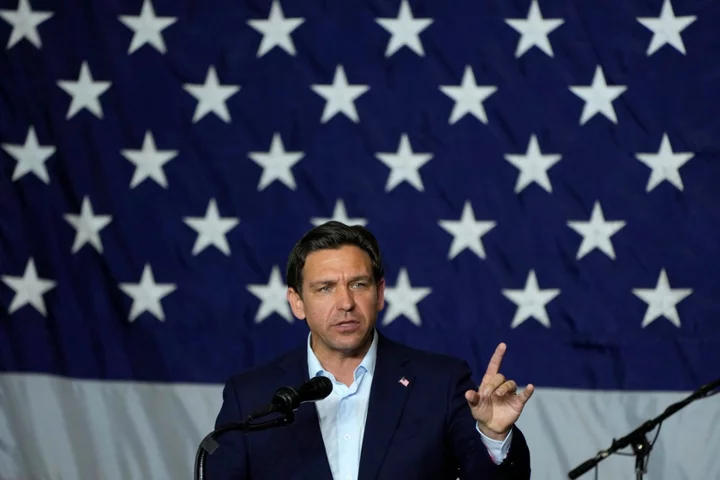
DeSantis once again defends slavery curriculum: Enslaved people ‘showing resourcefulness’ developed ‘skills’
Ron DeSantis continues to defend newly approved curriculum guidelines in Florida instructing students to learn that enslaved people “developed skills” that could be “applied for personal benefit”. “That means they developed skills in spite of slavery, not because of slavery,” the governor told NBC News in a recent interview that aired on 7 August. “It was them showing resourcefulness and then using those skills once slavery ended,” he added. Mr DeSantis, who is seeking the Republican nomination for president in 2024, has dismissed criticism from Vice President Kamala Harris and Democratic and Republican members of Congress urging Florida officials to amend the state’s African American history standards and reflect an honest history of race and racism in school curricula. The vice president has also rejected an invitation from Mr DeSantis to “discuss” the standards, telling a crowd in Orlando earlier this month that “there is no roundtable, no lecture, no invitation we will accept to debate an undeniable fact: there were no redeeming qualities of slavery.” Mr DeSantis had previously stated he “wasn’t involved” with the guidelines approved by the state’s appointed Board of Education. He said the standards are “probably going to show some of the folks” – enslaved people – “that eventually parlayed, you know, being a blacksmith into doing things later in life.” The development of such “skills” would not have benefited the millions of enslaved people in the US in the decades before slavery’s abolition. Another controversial guideline instructs high schoolers to be taught that a massacre in the state led by white supremacists against Black residents to stop them from voting in 1920 included “acts of violence perpetrated against and by African Americans.” “Adults know what slavery really was. It involved rape, it involved torture, it involved taking a baby from their mother, it involved some of the worst examples of depriving humanity of people in our world,” Ms Harris said in her remarks in Jacksonville last month. South Carolina Senator Tim Scott, the only Black Republican in the Senate, echoed Ms Harris in his criticism of the standards, stressing that slavery was defined by “separating families, about mutilating humans and even raping their wives”. “It was just devastating,” said Mr Scott, who is also seeking the 2024 Republican nomination. “So I would hope that every person in our country – and certainly running for president – would appreciate that.” Mr DeSantis told NBC in response: “Don’t take that side of Kamala Harris against the state of Florida. Don’t indulge those lies.” The new standards join the governor’s overhaul of public education and a “parents’ rights” agenda that targets honest lessons on race and racism and gender and sexuality, which the governor told NBC amounts to “indoctrination”. “Those standards were not political at all,” he added. “The legislature didn’t dictate any of that. [The] governor’s office didn’t dictate anything of that.” Last week, before thousands of high school students enrolled in advanced placement courses begin classes for the 2023-2024 school year, the DeSantis administration criticised the College Board’s warning that Florida education officials had “effectively banned” AP Psychology courses in the state under the Parental Rights in Education Act, what opponents have derided as the “Don’t Say Gay” law. Read More Ron DeSantis admits ‘of course’ Donald Trump lost the election DeSantis blasted for ‘un-American’ restrictions on AP psychology course under ‘Don’t Say Gay’ law Why Florida’s new curriculum on slavery is becoming a political headache for Ron DeSantis
2023-08-07 22:46
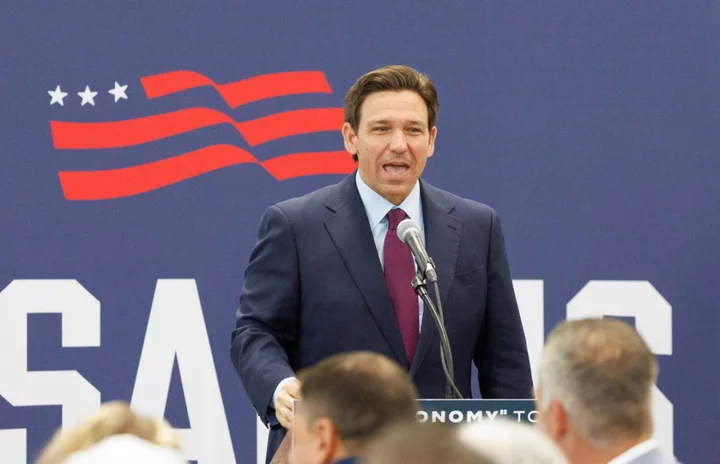
DeSantis wants Kamala Harris to meet the controversial right-wing scholar behind Florida’s slavery curriculum
Florida Governor Ron DeSantis wants to meet with Vice President Kamala Harris to discuss her criticism of the state’s Black history school curriculum standards after she joined widespread outrage over newly approved guidelines that diminish the impact of slavery and racist violence. “In Florida we are unafraid to have an open and honest dialogue about the issues. And you clearly have no trouble ducking down to Florida on short notice,” the governor wrote in a letter on 31 July, referencing her recent remarks in the state. “So given your grave concern (which, I must assume, is sincere) about what you think our standards say, I am officially inviting you back down to Florida to discuss our African American History standards,” he added. The administration also has invited William B Allen, one of the members of the working group that developed the standards who has a long history of inflammatory remarks and partisan rhetoric. The Independent has requested comment from the office of Ms Harris. The vice president travelled to Orlando on Tuesday to deliver remarks at the 20th Women’s Missionary Society of the African Methodist Episcopal Church Quadrennial Convention. Her visit follows remarks in the state on 21 July to condemn the state’s “propaganda” and the “extremist, so-called leaders” who support it. Though she did not name him or any other Florida officials, the vice president’s speech was directly aimed at the governor, whose administration has sought to radically overhaul public education and establish a “parents’ rights” agenda that restricts honest lessons of race and racism, threatens discussion of LGBT+ people and events, targets libraries and reshapes local school boards. A new set of standards for African American history in Florida schools will teach middle schoolers how enslaved people “developed skills” that could be “applied for personal benefit”. Another guideline instructs high schoolers to be taught that a massacre led by white supremacists against Black residents in Ocoee to stop them from voting in 1920 included “acts of violence perpetrated against and by African Americans.” Civil rights advocates, educators and lawmakers have warned that the guidelines present a distorted, revisionist picture of American history. “Adults know what slavery really was. It involved rape, it involved torture, it involved taking a baby from their mother, it involved some of the worst examples of depriving humanity of people in our world,” Ms Harris said in her remarks in Jacksonville. Members of the working group and the Florida Board of Education have defended the unanimously approved standards, assuring that they include comprehensive lessons on American history, including its darkest chapters. Mr Allen, a Black professor emeritus at Michigan State University who also sits on the national advisory board of the right-wing think tank Center for Urban Renewal and Education, has repeatedly defended the working group’s guidelines. A review of his past statements from Popular Information reveals a history of incendiary, contrarian remarks used to bolster and legitimise right-wing ideology. In 1989, he faced protests while participating in a panel titled “Blacks? Animals? Homosexuals? What is a Minority?” on which he claimed that special classes of protection for LGBT+ people and other minorities are a “fatal” mistake that heighten “tensions and antagonism”. Creating legal protections for minority groups “is the beginning of the evil of reducing American blacks to an equality with animals and then seducing other groups to seek the same charitable treatment,” according to prepared remarks. His speech was denounced by the US Civil Rights Commission – on which he was then serving as chair – as “disgusting” and “necessarily inflammatory”. That same year, he also was charged with kidnapping a 14-year-old girl from a Native American reservation in Arizona while she was the subject of a custody battle between her mother and a white couple who adopted her. Mr Allen also has opposed race-conscious admissions in higher education, including leading a campaign with a group that included members of the conservative Christian Hillsdale College and right-wing interest group the Heritage Foundation. He also has criticised The 1619 Project, which is explicitly banned from Florida schools, and has rejected concepts including “systemic racism, institutional racism [and] white privilege.” Mr DeSantis has routinely accused “the left” and Democratic officials of “indoctrinating” students in the state while he promotes an agenda that bans honest discussions of race and racism, sexuality and gender. The governor’s administration also recently approved materials from right-wing political advocacy group PragerU to be included in K-12 classrooms. The founder himself has said that those lessons are explicitly designed to indoctrinate. The campaign for Mr DeSantis, who is seeking the Republican nomination for president in 2024, has fired back at Black Republicans in Congress who have joined criticism of the African American history standards, including US Reps Byron Donalds and John James, as well as 2024 rival and South Carolina Senator Tim Scott. Both Mr James and Mr Donalds have endorsed Donald Trump. Read More Why Florida’s new curriculum on slavery is becoming a political headache for Ron DeSantis Most of Florida work group behind controversial new guidelines on African American history did not agree, report says The GOP primary is already decided. We’re just pretending it isn’t
2023-08-02 01:27
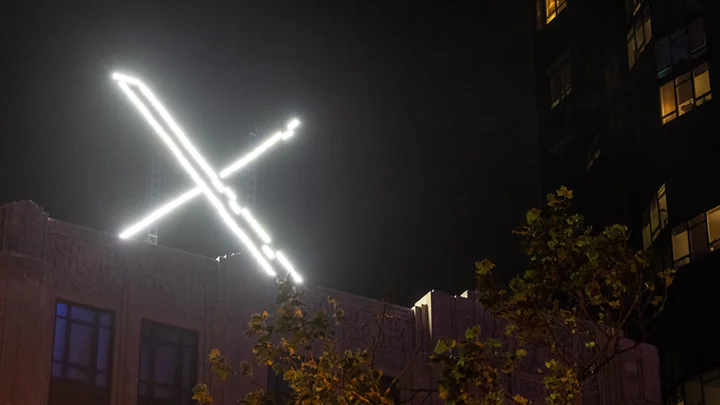
Twitter takes down huge ‘X’ sign on roof after San Francisco probe and neighbour complaints
Workers were seen on Monday dismantling a giant light-up ‘X’ sign on top of the downtown San Francisco headquarters of X, formerly known as Twitter, following an investigation from city officials that the social media company put up the new sign without proper permits. Earlier this month, Twitter completed its rebranding to X, part of CEO Elon Musk’s larger plan to turn the social networking site into an “everything app” like China’s WeChat. To commemorate the occasion, the company began taking down its well-known sign with its old blue bird logo, which long stood over the intersection of 10th and Market Street. That effort quickly ran into issues. Last Monday, police showed up and stopped the workers removing the bird sign, alleging the company didn’t have proper permits, and hadn’t taped off the sidewalk below the project, putting pedestrians at risk of falling debris, according to The Associated Press. Once the new, short-lived X sign went up, people in neighbouring buildings complained that the installation was strobing extremely bright light into their homes and businesses at all hours. Over the weekend, city building inspectors sought to investigate the "structure on [the] roof without permit", but were refused access to X headquarters on Friday and Saturday, according to city records obtained by The San Francisco Standard. The company told the inspectors the sign was only temporary, and was installed for an event, according to the records. The Independent has contacted X for comment. The kerfuffle over the sign is the latest incident in what’s been a tumultuous period under the new management of Elon Musk. The company has laid off thousands of people since the tech billionaire took over, including key members of its content moderation and human rights teams. During the winter, users exploiting oversights on a new paid verification tier impersonated major public companies, causing chaos for their share prices with pranks like an Eli Lilly imposter declaring that insulin was now free. Twitter has lost nearly half of its advertising revenue since Mr Musk took over, according to Mr Musk, and has laid off about half of X’s formerly 7,500-person staff. Read More Trump's early work to set rules for nominating contest notches big win in delegate-rich California X threatens to sue researchers who accused Twitter of allowing ‘hate to prosper’ Forecast calls for 108? Phoenix will take it, as record-breaking heat expected to end Thick smoke clouds billow from tractor-trailer fire next to Philadelphia bridge UK sanctions six people after British-Russian dissident’s appeal rejected Co-ordinated strike action by teachers in autumn off as unions accept pay rise
2023-08-01 06:21
